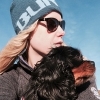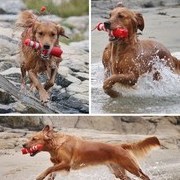-
Hvem er aktive 0 medlemmer
- Ingen innloggede medlemmer aktive
-
Nye innlegg
-
Av Wilhelmina · Skrevet
Jeg klipper min selv. Har kjøpt en billig klippemaskin på Biltema som fungerer helt supert, med flere ulike innstillinger for pelslengde. Klipper henne 3 mm på kroppen og 6mm på hale og ører. Når hun skal klippes tar jeg frem en slikkematte med leverpostei som hun koser seg med mens jeg klipper. Gjør dette ca. 5 minutter om dagen, så det tar en stund før hun er helt nedklippet, men hun slipper det stresset hos frisøren i hvert fall, og hun rekker ikke å bli lei ettersom det er såpass korte økter. -
Sommeren nærmer seg (håper jeg), og jeg har begynt å tenke på om jeg skal klippe ned hunden i år også (som tidligere somre), eller ikke: Han blir så fin med kort lettstelt pels, Han takler varmen så mye bedre, han tørker fortere etter han har badet osv. Men; Han liker absolutt ikke denne timen det tar å klippe han ned. Hundefrisøren sier han er grei, oppfører seg bra. Men pistrer og piper. Og jeg må dra han inn "med makt". Og da blir jeg litt sånn; "Er det verd det? Skal han få slippe klippingen?" Skal / Skal ikke
-
Haha ja, så sant man har fryser på forhånd. 😂 Jeg kjøpte meg fryser ene og alene mtp råfôr når jeg kjøpte leilighet. Blir billigere i lengden uansett. 😁
-
Jeg «har» også en hund som er usikker på fremmede mennesker og dyr (hun måtte bli igjen hos foreldrene mine da jeg flyttet, men jeg tok meg av treningen av henne). Hun har alltid vært tilbaketrukken og skeptisk, helt siden hun var valp. Så har iallfall et par ord å meddele. Det er en sterk genetisk komponent til dette, og ulldotten min kommer nok aldri til å bli den sosiale hunden som oppsøker andre. Uavhengig av om vi hadde vært enda bedre på å sosialisere henne i oppveksten, ville nok det genetiske utgangspunktet hennes uansett begrenset hvor komfortabel hun ville vært med fremmede. Erfaringsmessig så tror jeg at det beste man kan gjøre i en slik situasjon er først og fremst å eksponere valpen for positive opplevelser med andre, under kontrollerte forhold. Kanskje har du venner eller familie som kan hjelpe til med treningen, og la alt foregå på valpens premisser. Vel så viktig tror jeg det er å lære valpen at den IKKE trenger å forholde seg til andre hvis ikke den ønsker det. Nå vet ikke jeg om dere sliter med f.eks. passering av andre folk eller hunder pga. skepsisen, men det gjorde iallfall vi. Kinderegg-metoden kan være veldig effektiv for å få valpen til å ta kontakt med deg når andre mennesker/hunder kommer til syne, men også for å skape positive assosiasjoner til å møte på andre på tur. EDIT: Sånn ang. selve bjeffingen, så ville jeg kanskje trodd at dette hadde roet seg av seg selv dersom den generelle tryggheten rundt fremmede mennesker og dyr ble bedre, for å konkludere. Men nå var jo dette bare en enkeltsituasjon. Hvorvidt bjeffingen i situasjoner med fremmede er et generelt problem hos dere vet jo ikke jeg
-
Yuhu! Valpen min er litt småskeptisk til fremmede og det er noe vi jobber mye med. I stad var det en som fikk hilse på han, satte seg på huk og lot Melvin komme bort for å si hei på eget initiativ. Jeg så at han var litt usikker (halen), men han gjorde alt på eget initiativ og hadde all mulighet til å trekke seg unna når han følte for det. Mannen satt helt stille. Plutselig så trekker han seg bakover og bjeffer til som bare det. Da hadde han hilst og fått kos av denne mannen i en gooood stund, luktet rundt og virket ok med situasjonen. Mannen nevnte at han hadde hund selv og at det sikkert luktet av klærne. Kan lukten av en hund være grunnen til at han plutselig bråsnudde sånn? Han er ikke slem på noe vis, bare bjeffer og trekker seg unna. Han er også usikker på andre hunder og dyr, noe vi også jobber mye med. 🫠
-
-
Nylig opprettede emner




.thumb.png.533a9022f9e3edc7d9e88d5a1bb1abb8.png)

Recommended Posts
Join the conversation
You can post now and register later. If you have an account, sign in now to post with your account.